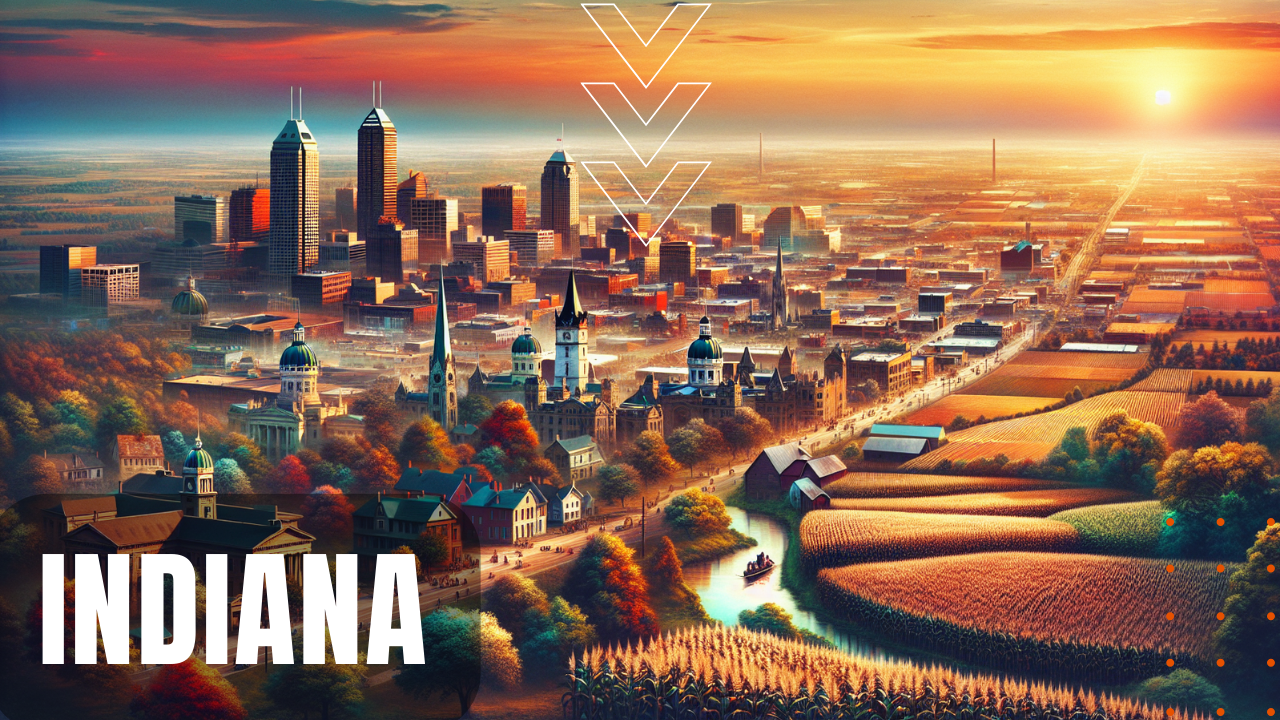Where in the World is Indiana

Known as the Hoosier State, Indiana was formed from the Northwest Territory in 1800, before entering the Union sixteen years later as the 19th American state. Bound by Lake Michigan and Michigan to the north, Kentucky to the south, Ohio to the east and Illinois to the west, the state’s 36,420 square mile land mass is home to major cities such as its capital Indianapolis, Fort Wayne, Evansville, South Bend, Gary, Hammond, Muncie and Bloomington. Indiana is also home to three distinct geographic regions, including the Great Lakes Plains in the north, the Till Plains in the central part of the state and the Southern Plains or Lowlands to the south, the later home to steep hills known as knobs, as well as therapeutic mineral springs in towns such as West Baden (bay den) and French Lick.
A Forested State
Known for its humid continental climate, with four distinct seasons including long warm summers in the 70s and 80s to cool winters with lows to 25 degrees Fahrenheit, the state also boasts an annual rainfall of 40 inches, although the region is also prone to tornadoes in the springtime. Ranging from 320 feet above sea level at the Ohio River to the state’s highest peak at Hoosier Hill, some 1,257 feet above sea level, Indiana shares a 41-mile shoreline with Lake Michigan, while the state’s major rivers include the Ohio, Wabash, White, Tippecanoe and Kankakee. Indiana is also home to 4.5 million acres of forests, which provides a natural sanctuary for a wide abundance of wildlife, including whitetail deer, raccoon, opossum, gray fox, coyote, beaver and mink, while the state’s population of bobcats and badgers have been identified as endangered species to the state. Home to more than 6.83 million Hoosiers, Indiana has long been known as a major industrial and engineering center within the United States, ranging from the production of iron, steel and petroleum products to pharmaceutical companies such as Roche and Eli Lilly.
Booming Economy
Boasting a state domestic product of $455 billion—closely matching the GDP of countries like Belgium or Ireland—Indiana is rich in bituminous coal in the southwestern part of the state, while other industries include healthcare and insurance, transportation and motor vehicle production, industrial and farm machinery, electronic equipment and furniture manufacturing, while the state’s leading agricultural yields include corn, soybeans, wheat, oats, rye, tomatoes and livestock. Home to a wide range of top universities and colleges, Indiana’s largest include Indiana University, Purdue, Ball State and Notre Dame, making the state of Indiana, a thriving centerpiece in the American midwest.
